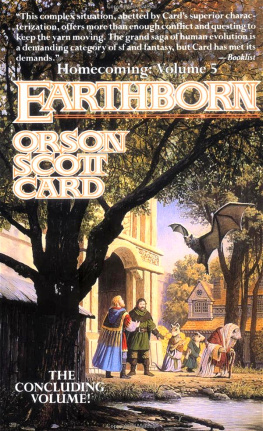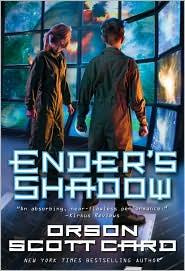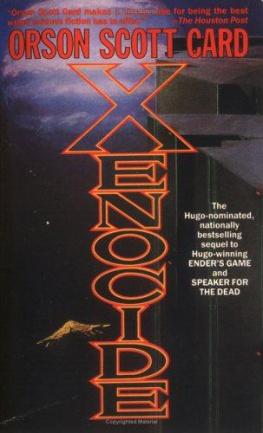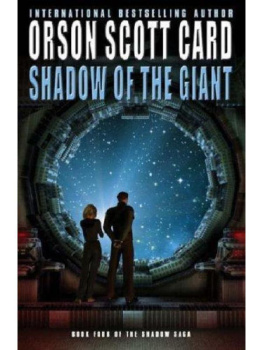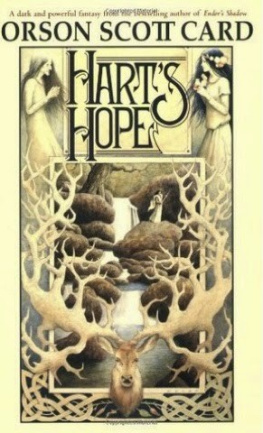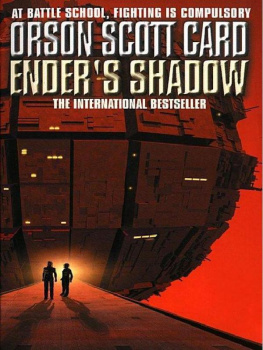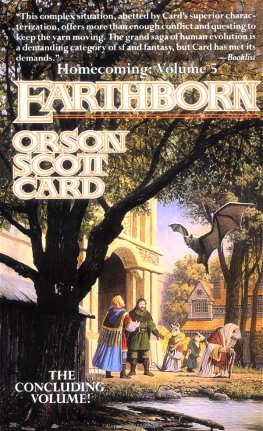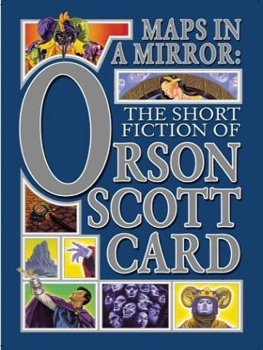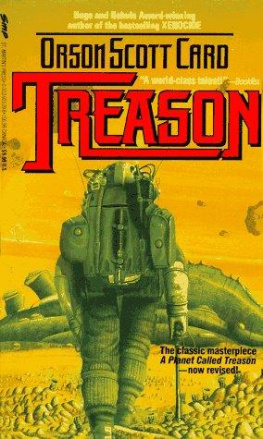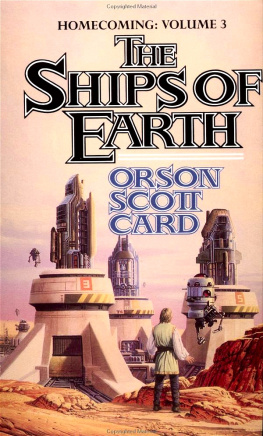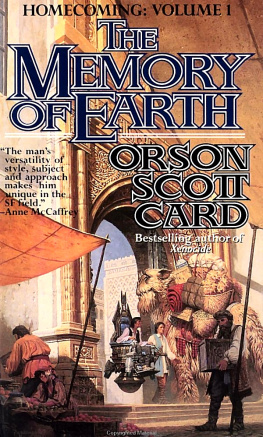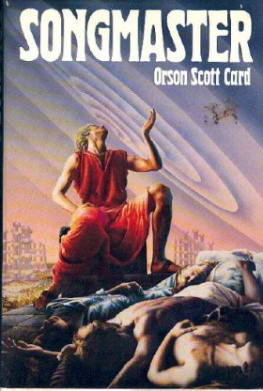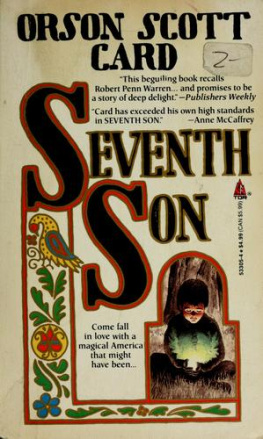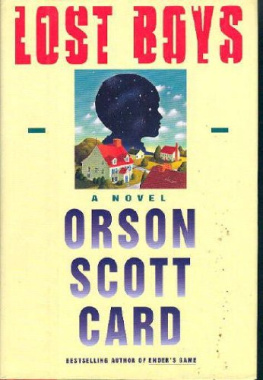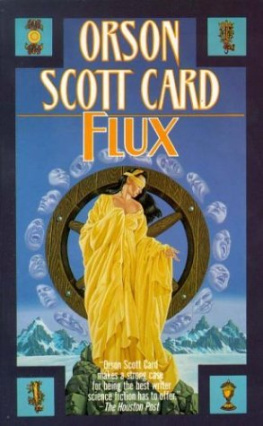Orson Scott Card
Earthborn
CHARACTERS
Note on the Conventions of Naming
Among the Nafari humans, it is the custom for persons of distinction to add titles of honor to their names, as honorifics. Formally, the honorific is put at the beginning of the name, so that on state occasions the king of Darakemba is Ak-Moti; but most commonly the honorific is added at the end: thus, Motiak. Some honorifics are altered in order to combine with the name, and some names to combine with the honorific. Thus when Jamim was heir, he was Ha-Jamim or Jamimha, the normal pattern; but as king he was Ka-Jamim or Jaminka (compared with Nuak/Ak-Nu and Motiak/Ak-Moti); and as former king he is spoken of as Ba-Jamim or Jamimba (compared with Nuab/ Ab-Nu and Motiab/Ab-Moti).
The honorifics for men that show up in this book are: Ak/Ka, which means "reigning king"; Ha/Akh, "heir"; Ab/Ba, "former king"; Ush, "mighty warrior"; Dis, "beloved son"; Og/Go, "high priest"; Ro/Or, "wise teacher"; Di/Id, "traitor." The honorifics for women that show up in this book are: Dwa, "mother of the heir" (whether she is living or dead); Gu/Ug, "most-honored wife of king"; Ya, "great compassionate woman."
In addition, the syllable da is used as an all-purpose term of endearment, and is inserted at the end of a usually shortened name, but before any added honorifics. Thus Chebeya, in private, calls her husband "Kmadaro," which is (A)kma + da (endearment) + ro (honorific meaning "great teacher"), and Akmaro calls her "Bedaya," which is (Che)be + da (endearment) + ya (honorific meaning "great compassionate woman").
The sons of a prominent man are regarded collectively as his "tribe" and are referred to that way. Thus the four sons of Motiak are sometimes called "the Motiaki"; the four sons of Pabulog are called "the Pabulogi" until they repudiate the name.
It is also worth pointing out that there are several terms for the different intelligent species. The sky people, earth people, and middle people can also be called angels, diggers, and humans, respectively. The former three terms suggest formality, dignity, and equivalency among the species. However, the latter three terms are merely informal, not necessarily pejorative, and members of all three species readily use both the formal and informal terms for themselves.
Humans (Middle People)
IN DARAKEMBA
Motiak, or Ak-Moti-the king, conqueror of most of the Darakemba empire
Dudagu, or Gu-Duda-Motiak's present wife, mother of his youngest son Toeledwa [toe-eh-LED-wah], or Dwa-Toel-Motiak's late wife, mother of his first four children
Jamimba, or Ba-Jamim-Motiak's late father
Motiab, or Ab-Moti-Jamimba's father, who led the Nafari out of the land of Nafai to unite them with the people of Darakemba, forming the core of the empire
Aronha, or Ha-Aron-Motiak's eldest son, his heir Edhadeya, or Ya-Edhad-Motiak's eldest daughter and second child Mon-Motiak's second son, third child; named after Monush Ominer-Motiak's third son, fourth child; the last of Toeledwa's children
Khimin-Motiak's fourth son; the only child of Dudagu, Motiak's current wife Monush, or
Ush-Mon-Motiak's leading soldier
IN CHELEM
Akmaro, or Ro-Akma-a former priest of King Nuak of the Zenifi, he now leads a group of followers of the teachings of Binaro/Binadi; his people are sometimes called
Akmari Chebeya, or Ya-Cheb-Akmaro's wife, a raveler
Akma-Akmaro's and Chebeya's son and oldest child
Luet-Akmaro's and Chebeya's daughter and youngest child
Pabulog, or Og-Pabul-former high priest of King Nuak, and now a particularly vicious leader among the Elemaki, with an army at his disposal
Pabul-Pabulog's oldest son Udad-Pabulog's second son Didul-Pabulog's third son Muwu-Pabulog's foruth and youngest son
AMONG THE ZENIFI
Zenifab, or Ab-Zeni-the founding king of the Zenifi, for whom the tribe is named; their fundamental belief is that humans should not live with angels or diggers, and they tried to re-establish a pure-human colony in their ancestral homeland of Nafai after the Nafari merged with the Darakembi
Nuak, or Ak-Nu; also Nuab, or Ab-Nu-Zenifab's son and recent king of the Zenifi; in speaking of the time when he reigned, "Nuak" is used; in referring to later times, he is called "Nuab"; there is always some confusion for a while in changing over from one honorific to another
Ilihiak, or Ak-Ilihi-Nuak's son, who was never expected to be the king, but had the office thrust upon him in the crisis after his father was murdered
Wissedwa, or Dwa-Wiss-Ilihiak's wife; she saved the Zenifi after Nuak's cowardly retreat
Khideo-leading soldier of Ilihiak; he refuses all honorifics because he once attempted to kill Nuak
Binadi, or Di-Bina; also called Binaro, or Ro-Bina-condemned to death and executed by Nuak and Pabulog, he was officially designated a traitor (thus Binadi); but among Akmaro's people, he is called Binaro and revered as a great teacher
IN THE STARSHIP BASILICA
Shedemei-the starmaster, a brilliant geneticist, she is the one survivor from the original group of humans who were brought back to Earth from the planet Harmony. Among the diggers, or earth people, she is known as the One-Who-Was-Never-Buried
Angels (Sky People)
Husu-commander of the spies, a sort of "cavalry" composed entirely of sky people bGo-Motiak's chief clerk, head of much of the bureaucracy of Darakemba
Bego-bGo's otherself, the king's archivist and tutor to Motiak's children
Diggers (Earth People)
Uss-Uss, or Voozhum-Edhadeya's chambermaid, a slave; but something of a sage and priestess among the other digger slaves
GEOGRAPHICAL NOTES
What used to be MesoAmerica and the Caribbean were transformed by a single geological event under the Earth's crust-the formation of a fast-flowing current in the mantle that plunged the Cocos plate northward at an incredible rate. Behind it, more than a hundred volcanos formed an uninhabitable archipelago extending hundreds of miles to the east and west of the Galapagos-dozens are still active. At the leading edge, the Cocos plate attacked the Caribbean plate far faster than it could be subducted. The result was dramatic uplifting and folding; by ten million years after the departure of the human race, there were several whole ranges of mountains above ten kilometers in height, with some peaks reaching higher than eleven kilometers. Between erosion and the slowing of the Cocos plate to merely three times the speed of any other plate on Earth, the highest peaks are now only some ninety-five hundred meters above sea level.
Besides the massif of high mountains, the Earth's crust behind the mountains was also forced upward, causing Cuba, Jamaica, and Haiti to be connected to the torn and distorted land mass of Central America. Millions of years of flooding from the great mountain rivers created a vast plain of fertile soil from the Yucatan to Jamaica.
Even farther north from the Cocos plate, the general uplifting (and the same current in the mantle) hastened a process that had begun long before-the rifting of North America at about the line of the
Mississippi River. The eastern (Appalachian) plate began rotating counterclockwise and shifting northeastward; the western (Texas) plate continued its northwestward drift. (Northern South America [the Orinoco plate] was also gradually dragged along to drift somewhat northward, with a rift opening in Ecuador.)
It was the sudden rapid movement of the Cocos plate and the accompanying earthquakes and volcanism, not the limited nuclear exchanges that took place around that time, that made the Earth uninhabitable and forced humankind to abandon its birth planet. Nevertheless, all human emigrants carried with them the story that human actions had caused the destruction of the world.
Next page
